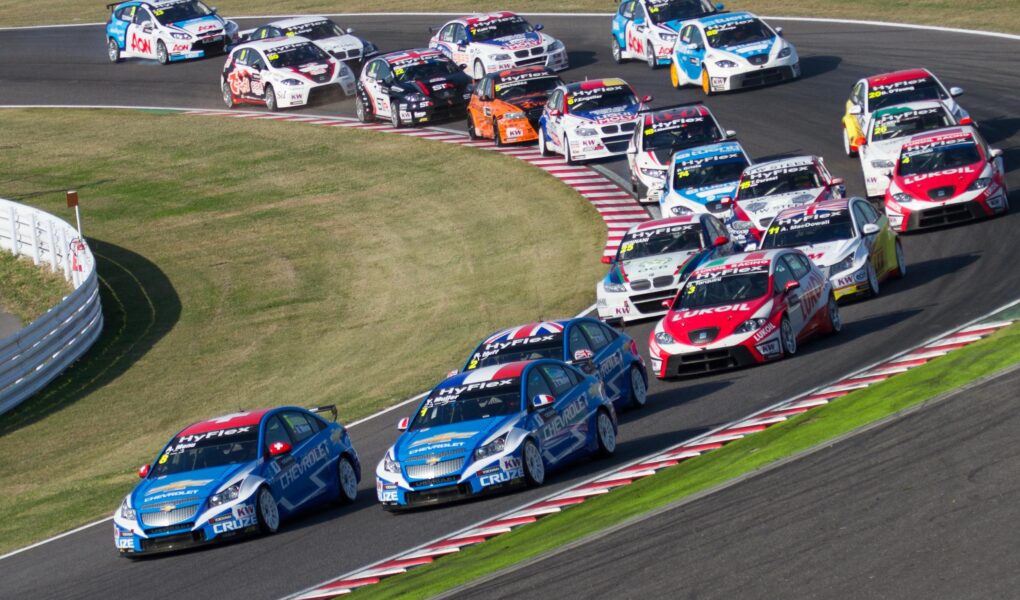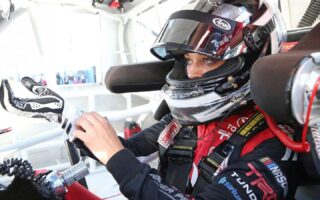Revving into the World of Racing Cars: A High-Octane Journey
The roar of engines, the scent of burning rubber, and the thrill of speed—welcome to the exhilarating world of racing cars. From the adrenaline-pumping laps of Formula 1 circuits to the gravel-splattered rally stages, racing cars represent the pinnacle of automotive engineering and sport. They are not just machines; they are the embodiment of innovation, precision, and an unyielding quest for dominance on the racetrack. In this article, we will explore the evolution of racing cars, the technologies that propel them to extraordinary speeds, and the passionate community that rallies behind this electrifying pursuit. Buckle up as we embark on a journey through the twists and turns of racing history, uncovering the stories, challenges, and excitement that define this captivating realm.
Table of Contents
- The Evolution of Racing Car Technology and Its Impact on Performance
- Aerodynamics in Motion: Understanding the Science Behind Speed
- Tuning for Triumph: Essential Modifications for Competitive Edge
- Safety Innovations in Racing Cars: Protecting Drivers on the Track
- Q&A
- To Wrap It Up
The Evolution of Racing Car Technology and Its Impact on Performance
The journey of racing car technology has witnessed remarkable transformations, shaping the very essence of performance on the track. In the early days, vehicles were primarily characterized by their raw horsepower and mechanical simplicity. However, as the sport evolved, innovations such as enhanced aerodynamics, advanced materials, and sophisticated electronics emerged as pivotal factors driving competitive edge. Today, racing machinery boasts features like active suspension systems, aerodynamic wings, and multilayer carbon fiber structures that contribute not only to speed but also to stability and handling. These advancements permit engineers to fine-tune every aspect of vehicle dynamics, creating machines that are as much a product of art as they are of engineering prowess.
Moreover, the integration of technology extends beyond the physical components of the vehicle. Cutting-edge data analytics and telemetry systems allow teams to monitor real-time performance metrics, giving them a strategic advantage in adapting to track conditions and driver behavior. Critical advancements include:
- Hybrids and E-Powertrains: Merging traditional combustion with electric power for greater efficiency.
- Telemetry Systems: Real-time data transmission for instant feedback and optimization.
- 3D Printing: Customizable parts designed for specific races, enhancing car capabilities.
As each new generation of racing vehicles rolls out, the impact of these technological strides is undeniable, redefining speed, efficiency, and the very nature of competitive racing.
Aerodynamics in Motion: Understanding the Science Behind Speed
The intricate dance between power and precision in racing cars becomes most apparent when we explore the fundamental principles of aerodynamics. Racing teams invest significant resources in wind tunnel testing and computational fluid dynamics (CFD) to optimize the shape and design of their vehicles. These methods help in shaping components like the front wing, rear wing, and underbody to manipulate airflow effectively. Some key aspects that contribute to superior performance on the track include:
- Drag Reduction: Streamlined shapes minimize air resistance, allowing cars to achieve higher speeds.
- Downforce Generation: Features like spoilers and diffusers increase the vertical force on the car, enhancing grip and cornering abilities.
- Weight Distribution: Balancing weight across the vehicle helps maintain stability while navigating turns.
To understand how these elements interact, consider a typical racing car’s aerodynamic profile. A well-designed vehicle uses its components strategically to achieve a seamless flow. Below is a glimpse of how various features influence performance indicators:
| Feature | Effect on Performance |
|---|---|
| Front Wing | Increases downforce, enhances steering responsiveness |
| Rear Wing | Maintains stability, prevents lift at high speeds |
| Diffuser | Improves airflow under the car, boosts downforce |
By harnessing the principles of aerodynamics, racing vehicles can cut through the air with minimal resistance while maximizing traction on the track. The synergy of these elements not only contributes to faster lap times but also plays a crucial role in ensuring driver safety and vehicle reliability during competition. Racing engineers, with their deep understanding of the physics at play, continuously innovate to gain an edge in the fierce world of motorsports.
Tuning for Triumph: Essential Modifications for Competitive Edge
To achieve a competitive edge on the racetrack, a deep understanding of your car’s performance variables is vital. Suspension tuning is a key modification that directly affects handling and stability. Upgrading to adjustable coilovers allows drivers to customize their ride height and damping settings, ensuring optimal contact with the asphalt during sharp turns. Pairing this with stiffer anti-roll bars can further reduce body roll, providing better cornering grip. In addition, the right choice of high-performance tires plays a crucial role; a softer compound can improve traction but may wear quickly, while a harder compound offers durability without sacrificing too much grip.
Next, it’s essential to consider the engine optimization techniques that can elevate your racing car’s performance. Installing a performance exhaust system enhances engine airflow, unlocking more horsepower and torque. Combined with a cold air intake, this modification allows the engine to breathe more efficiently, generating an impressive increase in power output. Utilizing ECU tuning is another strategy that recalibrates your engine management system for peak performance under racing conditions. Moreover, selecting the right gear ratios can dramatically improve acceleration and top speed, allowing your car to shift seamlessly through the gears while maximizing performance based on the track layout.
Safety Innovations in Racing Cars: Protecting Drivers on the Track
In the relentless pursuit of speed and performance, the racing industry has equally prioritized the safety of its drivers. Innovations in technology have significantly advanced safety measures, ensuring that competitors can focus on their passion without compromising their well-being. Key developments include HANS (Head and Neck Support) devices, which minimize the risk of head and neck injuries during high-impact collisions. Another critical advancement is the incorporation of multi-layer fire-resistant suits, designed to withstand extreme temperatures and protect against fire hazards inherent to racing environments. These protective gear enhancements, along with reinforced cockpits and crumple zones in the vehicle frames, showcase just how far engineering has come in safeguarding its most valuable assets—the drivers.
Moreover, the integration of advanced telemetry systems allows for real-time monitoring of driver health and vehicle performance, offering invaluable data that can be used to adjust strategies and increase safety protocols. Many racing teams now utilize impact-absorbing barriers around the track, designed to soften the blow during crashes and protect drivers during unthinkable scenarios. As these technologies continue to evolve, the racing community is committed to continually updating safety standards, ensuring that the thrill of racing is matched by the assurance of safety on the track. Below is a summary of some key safety innovations:
| Innovation | Description |
|---|---|
| HANS Device | Minimizes head and neck injuries during collisions. |
| Fire-Resistant Suits | Made from multi-layer fabrics to withstand fire hazards. |
| Crumple Zones | Reinforces vehicle frames to absorb impact energy. |
| Telemetry Systems | Monitors driver health and vehicle performance in real time. |
| Impact-Absorbing Barriers | Softens crashes and protects drivers from severe impacts. |
Q&A
Q&A: The Thrilling World of Racing Cars
Q1: What exactly is a racing car?
A1: A racing car is a high-performance vehicle designed specifically for competitive racing. Unlike regular cars, racing cars are built to optimize speed, agility, and handling on various tracks, whether they be asphalt, dirt, or oval circuits. They often feature advanced aerodynamics, lightweight materials, and powerful engines to give drivers an edge over their competition.
Q2: How do racing cars differ from regular cars?
A2: The primary differences lie in design and functionality. Racing cars are stripped of unnecessary weight, employing materials like carbon fiber to enhance performance. They are equipped with specialized tires for improved grip and have aerodynamic features like wings and diffusers to maximize downforce. Safety is also a major factor, with custom roll cages and other features ensuring driver protection during high-speed maneuvers.
Q3: What types of motorsport racing utilize racing cars?
A3: Numerous motorsport disciplines use racing cars, including Formula 1, NASCAR, rally racing, and sports car racing. Each category has its own regulations and specifications that dictate car design, engine performance, and race strategies, creating a diverse range of vehicles tailored for distinct environments and challenges.
Q4: What technologies are integrated into modern racing cars?
A4: Modern racing cars incorporate a blend of cutting-edge technologies, such as telemetry systems that monitor vehicle performance in real-time, advanced fuel management systems for efficiency, and sophisticated suspension setups to handle various track conditions. Many racing teams also utilize simulation software to optimize setups and strategize for races.
Q5: How important is aerodynamics in racing car design?
A5: Aerodynamics is crucial in racing car design, as it directly affects a car’s speed and handling. Engineers work meticulously to create shapes that reduce drag while increasing downforce, allowing cars to maintain high speeds through curves. The balance between drag reduction and downforce is a delicate art, often determining the outcome of races.
Q6: Who are some legendary figures in the world of racing?
A6: The realm of racing boasts numerous legends, each leaving an indelible mark on the sport. Figures like Ayrton Senna, Michael Schumacher, and Lewis Hamilton in Formula 1, or Dale Earnhardt and Richard Petty in NASCAR, have captivated audiences with their skills, charisma, and unforgettable moments on the track. Their contributions have helped shape racing into the thrilling spectacle it is today.
Q7: What are the challenges faced by racing car drivers?
A7: Racing car drivers encounter a myriad of challenges, including intense physical and mental demands. They must maintain peak physical fitness to withstand G-forces during races while also honing their focus and reaction times. Drivers face pressure from the competition, the team, and the expectations of fans, all while making split-second decisions that can determine the outcome of the race.
Q8: Can anyone participate in racing, or is it reserved for professionals?
A8: While high-level racing often requires professional training and sponsorship, there are many avenues for amateur enthusiasts to engage in the sport. Organizations host events for amateur racers, and programs offer the chance to learn driving skills on racetracks. Some may even start in karting, which is a common entry point into motorsports before progressing to higher levels of racing.
Q9: What does the future hold for racing cars?
A9: The future of racing cars is likely to be shaped by advancements in technology and sustainability. Electric racing is gaining traction, with series like Formula E showcasing the potential of electric powertrains. Additionally, innovations such as autonomous driving and hybrid technologies may redefine performance while prioritizing environmental considerations, creating a new era of racing that blends excitement with ecological awareness.
Q10: Why do racing cars continue to captivate audiences around the world?
A10: The allure of racing cars lies in their embodiment of speed, skill, and innovation. The thrill of watching drivers push the limits of their machines, coupled with the intense competition and the roar of engines, creates an electric atmosphere that captivates fans. It’s a celebration of engineering prowess and human determination, a sport that unites people across cultures and generations in their shared love of racing.
To Wrap It Up
As we cross the finish line of our exploration into the world of racing cars, we are reminded that these remarkable machines are not just engines of speed, but also symbols of innovation, engineering ingenuity, and the relentless pursuit of excellence. Each race tells a story—a narrative woven with the desires of drivers, the precision of pit crews, and the whispers of adrenaline that linger in the air as the green flag waves. Whether you’re a casual admirer of the sport or a devoted aficionado, the allure of racing cars lies in their ability to captivate our imagination, drawing us into the exhilarating dance of man and machine. As technology advances and the boundaries of what’s possible continue to be redefined, one thing remains certain: the thrill of the race will forever echo in the hearts of enthusiasts around the world. Thank you for joining us on this high-speed journey through the vibrant landscape of racing cars. Until the next lap, may the spirit of competition inspire you to chase your own finish lines.



